Local cooling for relieving pain from perineal trauma sustained during childbirth
- PMID: 33034900
- PMCID: PMC8094618
- DOI: 10.1002/14651858.CD006304.pub4
Local cooling for relieving pain from perineal trauma sustained during childbirth
Abstract
Background: Perineal trauma is common during childbirth and may be painful. Contemporary maternity practice includes offering women numerous forms of pain relief, including the local application of cooling treatments. This Cochrane Review is an update of a review last updated in 2012.
Objectives: To evaluate the effectiveness of localised cooling treatments compared with no treatment, placebo, or other cooling treatments applied to the perineum for pain relief following perineal trauma sustained during childbirth.
Search methods: We searched Cochrane Pregnancy and Childbirth's Trials Register, ClinicalTrials.gov, the WHO International Clinical Trials Registry Platform (ICTRP) (7 October 2019) and reference lists of retrieved studies.
Selection criteria: Published and unpublished randomised and quasi-randomised trials (RCTs) that compared a localised cooling treatment applied to the perineum with no treatment, placebo, or another cooling treatment applied to relieve pain related to perineal trauma sustained during childbirth.
Data collection and analysis: Two review authors independently assessed study eligibility, extracted data and assessed the risk of bias of included studies. Data were double checked for accuracy. The certainty of the evidence was assessed using the GRADE approach.
Main results: We included 10 RCTs that enrolled 1233 women randomised to the use of one cooling treatment (ice, cold gel pad, cooling plus compression, cooling plus compression plus (being) horizontal) compared with another cooling treatment, no treatment, or placebo (water pack, compression). The included trials were at low or uncertain risk of bias overall, with the exception that the inability to blind participants and personnel to group allocation meant that we rated all trials at unclear or high risk for this domain. We undertook a number of comparisons to evaluate the different treatments. Cooling treatment (ice pack or cold gel pad) versus no treatment There was limited very low-certainty evidence that cooling treatment may reduce women's self-reported perineal pain within four to six hours (mean difference (MD) -4.46, 95% confidence interval (CI) -5.07 to -3.85 on a 10-point scale; 1 study, 100 participants) or between 24 and 48 hours of giving birth (risk ratio (RR) 0.73, 95% CI 0.57 to 0.94; 1 study, 316 participants). The evidence is very uncertain about the various measures of wound healing, for example, wound edges gaping when inspected five days after giving birth (RR 2.56, 95% CI 0.58 to 11.33; 1 study, 315 participants). Women generally rated their satisfaction with perineal care similarly following cooling or no treatment. The potential exception was that there may be a trivially lower mean difference of -0.1 on a five-point scale of psychospiritual comfort with cooling treatment, that is unlikely to be of clinical importance. Cooling treatment (cold gel pad) + compression versus placebo (gel pad + compression) There was limited low-certainty evidence that there may be a trivial MD of -0.43 in pain on a 10-point scale at 24 to 48 hours after giving birth (95% CI -0.73 to -0.13; 1 study, 250 participants) when a cooling treatment plus compression from a well-secured perineal pad was compared with the placebo. Levels of perineal oedema may be similar for the two groups (low-certainty evidence) and perineal bruising was not observed. There was low-certainty evidence that women may rate their satisfaction as being slightly higher with perineal care in the cold gel pad and compression group (MD 0.88, 95% CI 0.38 to 1.38; 1 trial, 250 participants). Cooling treatment (ice pack) versus placebo (water pack) One study reported that no women reported pain after using an ice pack or a water pack when asked within 24 hours of giving birth. There was low-certainty evidence that oedema may be similar for the two groups when assessed at four to six hours (RR 0.96, 95% CI 0.50 to 1.86; 1 study, 63 participants) or within 24 hours of giving birth (RR 0.36, 95% CI 0.08 to 1.59). No women were observed to have perineal bruising at these times. The trialists reported that no women in either group experienced any adverse effects on wound healing. There was very low-certainty evidence that women may rate their views and experiences with the treatments similarly (for example, satisfied with treatment: RR 0.91, 95% CI 0.77 to 1.08; 63 participants). Cooling treatment (ice pack) versus cooling treatment (cold gel pad) The evidence is very uncertain about the effects of using ice packs or cold gel pads on women's self-rated perineal pain, on perineal bruising, or on perineal oedema at four to six hours or within 24 hours of giving birth. Perineal oedema may persist 24 to 48 hours after giving birth in women using the ice packs (RR 1.69, 95% CI 1.03 to 2.7; 2 trials, 264 participants; very low-certainty). The risk of gaping wound edges five days after giving birth may be decreased in women who had used ice packs (RR 0.22, 95% CI 0.05 to 1.01; 215 participants; very low-certainty). However, this did not appear to persist to day 10 (RR 3.06, 95% CI 0.63 to 14.81; 214 participants). Women may rate their opinion of treatment less favourably following the use of ice packs five days after giving birth (RR 0.33, 95% CI 0.17 to 0.68; 1 study, 49 participants) and when assessed on day 10 (RR 0.82, 95% CI 0.73 to 0.92; 1 study, 208 participants), both very low-certainty.
Authors' conclusions: There is limited very low-certainty evidence that may support the use of cooling treatments, in the form or ice packs or cold gel pads, for the relief of perineal pain in the first two days following childbirth. It is likely that concurrent use of several treatments is required to adequately address this issue, including prescription and non-prescription analgesia. Studies included in this review involved the use of cooling treatments for 10 to 20 minutes, and although no adverse effects were noted, these findings came from studies of relatively small numbers of women, or were not reported at all. The continued lack of high-certainty evidence of the benefits of cooling treatments should be viewed with caution, and further well-designed trials should be conducted.
Trial registration: ClinicalTrials.gov NCT01626287 NCT02024256.
Copyright © 2020 The Cochrane Collaboration. Published by John Wiley & Sons, Ltd.
Conflict of interest statement
Christine E East: received AUD 25,000 grant from the Queensland Nursing Council to support the 2007 protocol and review. Christine E East conducted an unpublished pilot study comparing the use of cold gel pads with ice packs in 2009. The study was not pursued due to lack of funding resources. It had not been considered for inclusion in the early versions of this review.
Lisa Begg: no interests to declare.
Paul R Marchant: collaborated in randomised controlled trials comparing the effectiveness of two cooling treatments for the relief of perineal pain following childbirth. These reports were included in the review (Steen 2000; Steen 2002) but were reviewed by other authors.
Karen Wallace: no interests to declare.
Christine E East: conducted an unpublished pilot study comparing the use of cold gel pads with ice packs in 2009. The study was not pursued due to lack of funding resources. It had been overlooked in previous versions of the review, given the pilot status.
Jiajia Liu: no interests to declare.
Emma Dorward: no interests to declare.
Rhiannon Whale: no interests to declare.
Figures
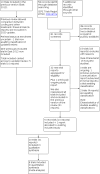




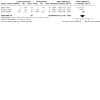
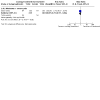


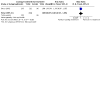
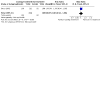
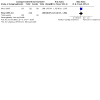
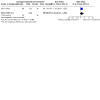
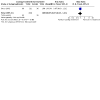
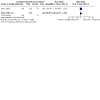
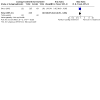
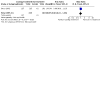

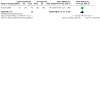
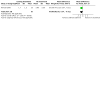
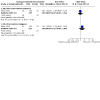

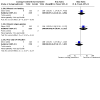
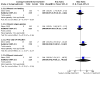
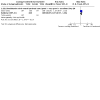
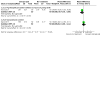
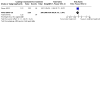
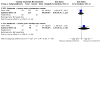
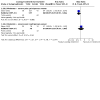
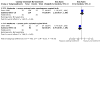

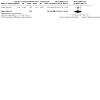
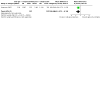

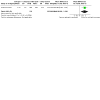
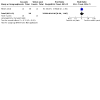
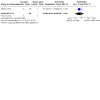
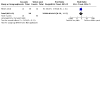
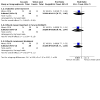
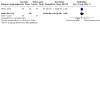
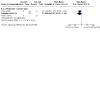
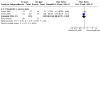
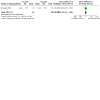
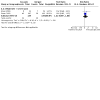
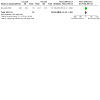
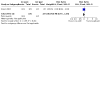
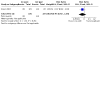
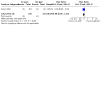
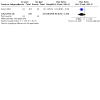
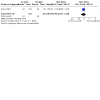
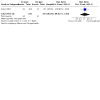
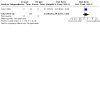
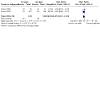
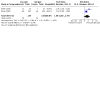
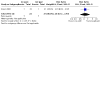

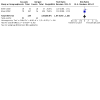
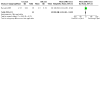
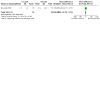
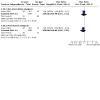
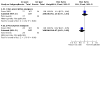
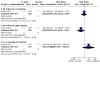
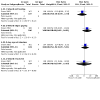
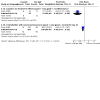

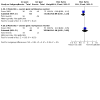

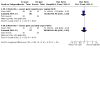
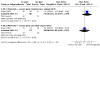
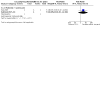
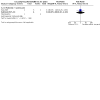
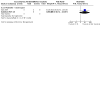
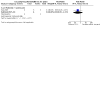
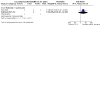
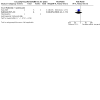
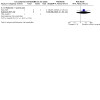
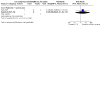
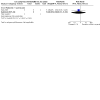
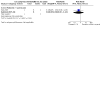
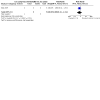
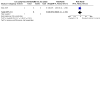
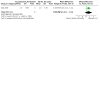
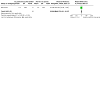


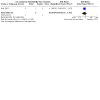
Update of
-
Local cooling for relieving pain from perineal trauma sustained during childbirth.Cochrane Database Syst Rev. 2012 May 16;(5):CD006304. doi: 10.1002/14651858.CD006304.pub3. Cochrane Database Syst Rev. 2012. Update in: Cochrane Database Syst Rev. 2020 Oct 9;10:CD006304. doi: 10.1002/14651858.CD006304.pub4. PMID: 22592710 Updated.
Similar articles
-
Oral non-steroidal anti-inflammatory drugs (single dose) for perineal pain in the early postpartum period.Cochrane Database Syst Rev. 2021 Jan 11;1(1):CD011352. doi: 10.1002/14651858.CD011352.pub3. Cochrane Database Syst Rev. 2021. PMID: 33427305 Free PMC article.
-
Local cooling for relieving pain from perineal trauma sustained during childbirth.Cochrane Database Syst Rev. 2012 May 16;(5):CD006304. doi: 10.1002/14651858.CD006304.pub3. Cochrane Database Syst Rev. 2012. Update in: Cochrane Database Syst Rev. 2020 Oct 9;10:CD006304. doi: 10.1002/14651858.CD006304.pub4. PMID: 22592710 Updated.
-
Local cooling for relieving pain from perineal trauma sustained during childbirth.Cochrane Database Syst Rev. 2007 Oct 17;(4):CD006304. doi: 10.1002/14651858.CD006304.pub2. Cochrane Database Syst Rev. 2007. Update in: Cochrane Database Syst Rev. 2012 May 16;(5):CD006304. doi: 10.1002/14651858.CD006304.pub3. PMID: 17943903 Updated.
-
Aspirin (single dose) for perineal pain in the early postpartum period.Cochrane Database Syst Rev. 2020 Jul 24;7(7):CD012129. doi: 10.1002/14651858.CD012129.pub3. Cochrane Database Syst Rev. 2020. PMID: 32702783 Free PMC article.
-
Treatments for breast engorgement during lactation.Cochrane Database Syst Rev. 2020 Sep 18;9(9):CD006946. doi: 10.1002/14651858.CD006946.pub4. Cochrane Database Syst Rev. 2020. PMID: 32944940 Free PMC article.
Cited by
-
Oral non-steroidal anti-inflammatory drugs (single dose) for perineal pain in the early postpartum period.Cochrane Database Syst Rev. 2021 Jan 11;1(1):CD011352. doi: 10.1002/14651858.CD011352.pub3. Cochrane Database Syst Rev. 2021. PMID: 33427305 Free PMC article.
-
Development of aids to relieve vulvodynia during the postpartum period.Glob Health Med. 2024 Apr 30;6(2):149-155. doi: 10.35772/ghm.2023.01045. Glob Health Med. 2024. PMID: 38690132 Free PMC article.
-
The clinical characteristics of perineal tears: A study carried out on 14 pregnant women in a tertiary center: Case series.Ann Med Surg (Lond). 2022 Aug 18;82:104432. doi: 10.1016/j.amsu.2022.104432. eCollection 2022 Oct. Ann Med Surg (Lond). 2022. PMID: 36268344 Free PMC article.
-
Skin cooling and topical application of menthol can reduce propofol injection-induced pain, a randomized trial.Medicine (Baltimore). 2025 Jun 13;104(24):e42809. doi: 10.1097/MD.0000000000042809. Medicine (Baltimore). 2025. PMID: 40527818 Free PMC article. Clinical Trial.
-
Skin Cooling to Reduce the Pain Associated with Local Anesthetic Injection; a Randomized Controlled Trial.Arch Acad Emerg Med. 2022 Mar 10;10(1):e20. doi: 10.22037/aaem.v10i1.1562. eCollection 2022. Arch Acad Emerg Med. 2022. PMID: 35573720 Free PMC article.
References
References to studies included in this review
Barclay 1983 {published data only}
-
- Barclay L, Martin N. A sensitive area (Care of the episiotomy in the post-partum period). Australian Journal of Advanced Nursing 1983;1(1):12-9. - PubMed
Beleza 2017 {published data only}
-
- ACTRN12613000052730. Effects of cryotherapy in perineal pain after childbirth with episiotomy. www.anzctr.org.au/Trial/Registration/TrialReview.aspx?id=362921&isRe... (first received 22 November 2012).
-
- Beleza AC, Ferreira C, Meirelles M, Santos C, Nakanno AM. The effect of cryotherapy in perineal pain after vaginal childbirth with episiotomy. In: 16th International WCPT Congress; 2011 June 20-23; Amsterdam, Holland. 2011.
-
- Beleza AC, Ferreira CH, Driusso P, Dos Santos CB, Nakano AM. Effect of cryotherapy on relief of perineal pain after vaginal childbirth with episiotomy: a randomized and controlled clinical trial. Physiotherapy 2017;103(4):453-8. - PubMed
East 2007 {unpublished data only}
-
- ACTRN12607000557437. Randomised controlled trial of two local cooling regimes for relieving pain from perineal trauma sustained during childbirth. www.anzctr.org.au/Trial/Registration/TrialReview.aspx?id=82371 (first received 30 October 2007).
Francisco 2018 {published data only}
-
- East C. Co-interventions used in treatment and controls and trial registration dates [personal communication]. Email to: A Franciso 8 July 2020.
-
- East C. Data on outcomes provided [personal communication]. Emai to: A Francisco 3 March 2020.
-
- Francisco AA, De Oliveira SM, Steen M, Nobre MR, De Souza EV. Ice pack induced perineal analgesia after spontaneous vaginal birth: randomized controlled trial. Women and Birth 2018;31(5):e334-40. - PubMed
-
- Francisco AA, Oliveira SM, Bick D. Effect of ice to relieve perineal pain on daily activities of postpartum women. International Confederation of Midwives 30th Triennial Congress. Midwives: Improving Women’s Health; Prague, Czech Republic 2014;June 1-4:P053.
Morais 2016 {published and unpublished data}
-
- East C. Data on women with perineal trauma only, details of allocation concealment and trial registration [personal communication]. Email to: I Morais 28 January 2020.
-
- Neto AH, Amorim MM, Morais I, Lemos A, Leal N. Cryotherapy for the control of perineal pain following vaginal delivery. A randomized clinical trial. Obstetrics and Gynecology 2015;125(5 Suppl):64S-65S.
Navvabi 2009 {published and unpublished data}
-
- Navvabi RS, Kerman-Saravi F, Soroneh RM, Abedian Z. Cold and reduced episiotomy pain interfere with mood and daily activity. Shiraz Electronic Medical Journal 2011;12(2):87-92.
-
- Navvabi S, Abedian Z, Steen-Greaves M. Effectiveness of cooling gel pads and ice packs on perineal pain. British Journal of Midwifery 2009;17(11):724-9.
-
- Steen-Greaves M, Navvabi-Rigi S-D. Evaluation the effectiveness of cooling gel pads and ice packs on perineal pain and wound healing after episiotomy. irct.ir/trial/7477 (first received 11 August 2011) 2011.
Senol 2017 {published and unpublished data}
-
- Senol DK, Aslan E. The effects of cold application to the perineum on pain relief after vaginal birth. Asian Nursing Research 2017;11(4):276-82. - PubMed
-
- Senol DK. Normal Doğum Sonrasi Perineal Bölgeye Yapilansoğuk Uygulamanin Ağriyi Azaltmadaki Etkisi (The effect of cold application on reducing pain to the perineal region after normal delivery) [Doctoral Thesis]. Instanbul: Instanbul University Health Sciences Unit, 2014.
Steen 2000 {published data only}
-
- Griffith-Jones M, Steen M, Walker J, Cooper K. Randomised controlled trial of a new maternity cooling gel pad against ice packs and epifoam in the management of perineal oedema, bruising and pain after instrumental vaginal delivery. British Journal of Obstetrics and Gynaecology 1998;105(Suppl 17):88.
-
- Steen M, Cooper K, Marchant P, Griffiths-Jones M, Walker J. A randomised controlled trial to compare the effectiveness of icepacks and epifoam with cooling maternity gel pads at alleviating postnatal perineal trauma. Midwifery 2000;16:48-55. - PubMed
-
- Steen M, Cooper K. Perineal trauma: a localised cooling treatment for alleviating perineal oedema, bruising and pain following an episiotomy. In: "What works": research and practice in nursing; 1998 June 25; Leeds, UK. 1998.
Steen 2002 {published and unpublished data}
-
- Steen M, Marchant P. Alleviating perineal trauma - the APT study. RCM Midwives Journal 2001;4(8):256-8.
-
- Steen M, Marchant P. Ice packs and cooling gel pads versus no localised treatment for relief of perineal pain: a randomised controlled trial. Evidence Based Midwifery 2007;5(1):16-22. - PubMed
-
- Steen M. A randomised controlled trial to evaluate the effectiveness of localised cooling treatments in alleviating perineal trauma: the APT study. MIDIRS Midwifery Digest 2002;12(3):373-6.
Yusamran 2007 {published data only}
-
- Yasumran C, Titapant V, Kongjeera A. Relief perineal pain after perineorrhahy by cold gel pack pad: a randomized controlled trial. Thai Journal of Nursing Research 2007;11(2):87-95.
References to studies excluded from this review
Amani 2015 {published data only}
-
- Amani R, Kariman N, Mojab F, Alavi H, Majidi S. Comparison of the effects of cold compress with gel packs and topical olive oil on episiotomy wound healing. Journal of Babol University of Medical Sciences 2015;17(11):7-12.
-
- IRCT201409164529N12. Comparison the effect of cooling gel pads and topical olive oil on the intensity of episiotomy pain and wound healing in primiparous women referring to hospitals affiliated with the Gilan university of Medical Sciences in 2014. irct.ir/trial/4833 (first received 30 October 2014).
De Souza Bosco Paiva 2016 {published data only}
-
- De Souza Bosco Paiva C, De Oliveira SM, Francisco AA, Da Silva RL, De Paula Batista Mendes E, Steen M. Length of perineal pain relief after ice pack application: a quasi-experimental study. Women and Birth 2016;29(2):117-22. - PubMed
-
- RBR-9vmkcb. Duration of the analgesic effect of cryotherapy on perineal pain after childbirth: clinical trial. www.ensaiosclinicos.gov.br/rg/RBR-9vmkcb/ (first received 30 January 2013).
Dube 2013 {published data only}
-
- Dube J. Effect of application of ice on episiotomy. Asian Journal of Nursing Education and Research 2013;3(4):207-10.
Gallie 2003 {published data only}
-
- Gallie M, Pourghazi S, Grant JM. A randomized trial of pulsed electromagnetic energy compared with ice-packs for the relief of postnatal perineal pain. Journal of the Association of Chartered Physiotherapists in Women's Health 2003;93:10-4.
Hill 1989 {published data only}
-
- Hill PD. Effects of heat and cold on the perineum after episiotomy/laceration. Journal of Obstetric, Gynecologic and Neonatal Nursing 1989;18(2):124-9. - PubMed
Kaur 2012 {published data only}
-
- Kaur S, Janzen M. Reduction of perineal pain after vaginal birth with black tea: pilot randomized study. clinicaltrials.gov/ct2/show/NCT01626287 (first received 22 June 2012).
LaFoy 1989 {published data only}
-
- LaFoy J, Geden E. Postepisiotomy pain: warm versus cold sitz bath. Journal of Obstetric, Gynecologic and Neonatal Nursing 1989;18(5):399-403. - PubMed
Lu 2015 {published data only}
Moore 1989 {published data only}
-
- Moore W, James DK. A random trial of three topical analgesic agents in the treatment of episiotomy pain following instrumental vaginal delivery. Journal of Obstetrics and Gynaecology 1989;10:35-9.
Nam 1991 {published data only}
-
- Nam HK, Park YS. A study on comparisons of ice bag and heat lamp for the relief of perineal discomfort. Kanho Hakhoe Chi 1991;21(1):27-40. - PubMed
NCT02024256 {published data only}
-
- NCT02024256. Comparison between treatment with gauze soaked with cold magnesium sulfate solution against gauze soaked with cold water for treatment of perineal swelling following vaginal delivery - a double blind placebo controlled trial. clinicaltrials.gov/ct2/show/NCT02024256 (first received 31 December 2013).
Pinkerton 1961 {published data only}
-
- Pinkerton JH, Beard RW. Ice-packs after episiotomy. British Medical Journal 1961;1:1536-7.
Ramler 1986 {published data only}
-
- Ramler D, Roberts J. A comparison of cold and warm sitz baths for relief of postpartum perineal pain. Journal of Obstetric, Gynecologic and Neonatal Nursing 1986;15(6):471-4. - PubMed
Sheikhan 2011 {published data only}
-
- IRCT138807192248N3. The effect of cold therapy and the essential lavender oil on pain intensity and healing of episiotomy among primiparous women. irct.ir/trial/1878 (first received 26 April 2010).
-
- Sheiken F, Jahdi F, Khoie EM, Alizadeh NS, Sheikhan H, Haghani H. Episiotomy discomforts relief using cold gel pads in primiparous Iranian women (A comparative study). Research Journal of Medical Sciences 2011;5(3):150-4.
Thangaraju 2006 {published data only}
-
- Thangaraju P, Moey CB. Perineal cold pads versus oral analgesics in the relief of postpartum perineal wound pain. Singapore General Hospital Proceedings 2006;15(1):8-12.
References to studies awaiting assessment
Leventhal 2011 {published data only}
-
- ACTRN12608000439347. Ice pack for relieving perineal pain after normal delivery. www.anzctr.org.au/Trial/Registration/TrialReview.aspx?ACTRN=12608000439347 (first received 3 September 2008).
-
- Leventhal LC, De Oliveira SM, Nobre MR, Da Silva FM. Perineal analgesia with an ice pack after spontaneous vaginal birth: a randomized controlled trial. Journal of Midwifery and Women's Health 2011;56(2):141-6. - PubMed
Oliveira 2012 {published data only}
-
- ACTRN12608000551392. Comparing three duration times of cryotherapy (10, 15 and 20 minutes) in pregnant women for relieving pain from perineal trauma after birth. www.anzctr.org.au/Trial/Registration/TrialReview.aspx?ACTRN=12608000551392 (first received 5 September 2008).
-
- Oliveira SM, Silva FM, Riesco ML, Latorre M do R, Nobre MR. Comparison of application times for ice packs used to relieve perineal pain after normal birth: a randomised clinical trial. Journal of Clinical Nursing 2012;21(23-24):3382-91. - PubMed
Additional references
Aasheim 2017
Abedzadeh‐Kalahroudi 2019
Adie 2010
-
- Adie S, Naylor JM, Harris IA. Cryotherapy after total knee arthroplasty a systematic review and meta-analysis of randomized controlled trials. Journal of Arthroplasty 2010;25(5):709-15. - PubMed
Aguiar 2019
AIHW 2020
-
- Australian Institute of Health and Welfare. Australia’s Mothers and Babies 2018—in brief. Perinatal Statistics series no. 36. Cat. no. PER 108. Sydney: AIHW National Perinatal Statistics Unit, 2020.
Bisson 2019
-
- Bisson DL, Newell SD, Laxton C, on behalf of the Royal College of Obstetricians and Gynaecologists. Antenatal and Postnatal Analgesia. Scientific Impact Paper No. 59. BJOG: an international journal of obstetrics and gynaecology 2019;126(4):e115-124. - PubMed
Bleakley 2006
Bleakley 2010
-
- Bleakley CM, Davison GW. What is the biochemical and physiological rationale for using cold-water immersion in sports recovery? A systematic review. British Journal of Sports Medicine 2010;44(3):179-87. - PubMed
Bleakley 2012
Bonica 1990
-
- Bonica JJ. The Management of Pain. 2nd edition. Philadelphia: Lea and Felbinger, 1990.
Chou 2009
Chou 2013
Collins 2008
-
- Collins NC. Is ice right? Does cryotherapy improve outcome for acute soft tissue injury? Emergency Medicine Journal 2008;25(2):65-8. - PubMed
Davies‐Tuck 2015
-
- Davies-Tuck M, Biro MA, Mockler J, Steward L, Wallace EM, East CE. Maternal Asian ethnicity and the risk of anal sphincter injury. ACTA Obstet Gynecol 2015;94(3):308-15. - PubMed
Doğan 2017
-
- Doğan B, Gün İ, Özdamar Ö, Yılmaz A, Muhçu M. Long-term impacts of vaginal birth with mediolateral episiotomy on sexual and pelvic dysfunction and perineal pain. Journal of Maternal-fetal & Neonatal Medicine 2017;30(4):457-60. - PubMed
Dray 1995
-
- Dray A. Inflammatory mediators of pain. British Journal of Anaesthesia 1995;75(2):125-31. - PubMed
Dubois 2020
-
- Dubois B, Esculier J-F. Soft-tissue injuries simply need PEACE and LOVE. British Journal of Sports Medicine 2020;54(2):72-3. - PubMed
Dushesne 2017
-
- Duchesne E, Dufresne SS, Dumont NA. Impact of inflammation and anti-inflammatory modalities on skeletal muscle healing: From fundamental research to the clinic. Physical Therapy in Sport 2017;97(8):807-17. - PubMed
East 2011
-
- East CE, Sherburn M, Nagle C, Said J, Forster D. Perineal pain following childbirth: prevalence, effects on postnatal recovery and analgesia usage. Midwifery 2011;DOI:10.1016/j.midw.2010.11.009:5 pages. - PubMed
Engelhard 2019
Ernst 1994
-
- Ernst E, Fialka V. Ice freezes pain? A review of the clinical effectiveness of analgesic cold therapy. Journal of Pain and Symptom Management 1994;9(1):56-9. - PubMed
Francisco 2011
-
- Francisco AA, De Oliveira SM, Da Silva FM, Bick D, Riesco ML. Women's experiences of perineal pain during the immediate postnatal period: a cross-sectional study in Brazil. Midwifery 2011;27(6):e254-9. - PubMed
Gibson‐Helm 2015
-
- Gibson-Helm ME, Teede HJ, Cheng I-H, Block AA, Knight M, East CE, et al. Maternal health and pregnancy outcomes comparing migrant women born in humanitarian and nonhumanitarian source countries: a retrospective, observational study. Birth: Issues in Pregnancy Care 2015;42(2):116-24. - PubMed
Grant 1989
-
- Grant A, Sleep J. Relief of perineal pain and discomfort after childbirth. In: Chalmers I, Enkin M, Keirse MJ, editors(s). Effective Care in Pregnancy and Childbirth. Vol. 2. Oxford: Oxford University Press, 1989:1347-58.
Hay‐Smith 1998
Hedayati 2003
Hedayati 2005
Higgins 2020a
-
- Higgins JP, Savović J, Page MJ, Elbers RG, Sterne JA. Chapter 8: Assessing risk of bias in a randomized trial. In: Higgins JP, Thomas J, Chandler J, Cumpston M, Li T, Page MJ, et al (editors). Cochrane Handbook for Systematic Reviews of Interventions version 6.1 (updated September 2020). The Cochrane Collaboration, 2020. Available from www.training.cochrane.org/handbook. [ISBN: 9781119536628]
Higgins 2020b
-
- Higgins JP, Eldridge S, Li T (editors). Chapter 23: Including variants on randomized trials. In: Higgins JP, Thomas J, Chandler J, Cumpston M, Li T, Page MJ, et al (editors). Cochrane Handbook for Systematic Reviews of Interventions version 6.1 (updated September 2020). The Cochrane Collaboration, 2020. Available from www.training.cochrane.org/handbook.
Jiang 2017
Kettle 2010
Kettle 2012
Kuo 2013
-
- Kuo CC, Lin CC, Lee WJ, Huang WT. Comparing the antiswelling and analgesic effects of three different ice pack therapy durations: a randomized controlled trial on cases with soft tissue injuries. Journal of Nursing Research 2013;21(3):186-94. - PubMed
Lawrence 2017
Leventhal 2010
-
- Leventhal LC, Bianchi RC, De Oliveira SM. Clinical trial comparing three types of cryotherapy in non-pregnant women. Revista da Escola de Enfermagem da USP 2010;44(2):339-45. - PubMed
Lubkowska 2012
-
- Lubkowska A. Cryotherapy: physiological considerations and applications to physical therapy. In: Brettany-Saltikov j, Paz-Laurido B, editors(s). Physical Therapy Perspectives in the 21st Century - Challenges and Possibilities. www.intechopen.com: Intertech Open, 2012.
Mac Auley 2001
-
- Mac Auley DC. Ice therapy: how good is the evidence? International Journal of Sports Medicine 2001;22(5):379-84. - PubMed
Machado 2016
Malanga 2015
Manresa 2019
Martimbianco 2014
-
- Martimbianco AL, Gomes da Silva BN, De Carvalho AP, Silva V, Torloni MR, Peccin MS. Effectiveness and safety of cryotherapy after arthroscopic anterior cruciate ligament reconstruction. A systematic review of the literature. Physical Therapy in Sport 2014;15(4):261-8. - PubMed
McMasters 1977
-
- McMasters WC. A literary review on ice therapy in injuries. American Journal of Sports Medicine 1997;5(3):124-6. - PubMed
Mirkin 1978
-
- Mirkin G, Hoffman M. The Sports Medicine Book. New York: Little Brown & Co, 1978.
Mirkin 2015
-
- Mirkin G. Why ice delays recovery. www.drmirkin.com 2015.
Molakatalla 2017
NICE 2006
-
- National Institue for Health and Care Excellence (NICE. Postnatal care up to 8 weeks after birth: Clinical guideline CG37. www.nice.org.uk/guidance/cg37 2006, last updated February 2015 (accessed 21 January 2020).
NMPA 2019
-
- NMPA Project Team. National Maternity and Perinatal Audit: Clinical Report 2019. Based on births in NHS maternity services between 1 April 2016 and 31 March 2017. maternityaudit.org.uk/FilesUploaded/NMPA%20Clinical%20Report%202019.pdf 2019.
Nogueira 2019
-
- Nogueira NM, Felappi CJ, Lima CS, Medeiros DM. Effects of local cryotherapy for recovery of delayed onset muscle soreness and strength following exercise-induced muscle damage: systematic review and meta‑analysis. Sports Sciences for Health 2019;16:1-11. [DOI: 10.1007/s11332-019-00571-z] - DOI
Oakley 2013
-
- Oakley ET, Pardeiro RB, Powell JW, Millar AL. The effects of multiple daily applications of ice to the hamstrings on biochemical measures, signs, and symptoms associated with exercise induced muscle damage. Journal of Strength and Conditioning Research 2013;27(10):2743-51. - PubMed
Queensland Clinical Guidelines 2018
-
- Queensland Clinical Guidelines. Perineal Care. www.health.qld.gov.au/__data/assets/pdf_file/0022/142384/g-pericare.pdf 2018.
Ramos 2016
Reid 2005
-
- Reid G. ThermoTRP channels and cold sensing: what are they and what do they do? European Journal of Physiology 2005;451:250-63. - PubMed
RevMan 2014 [Computer program]
-
- Review Manager (RevMan). Version 5.3. Copenhagen: The Nordic Cochrane Centre, The Cochrane Collaboration, 2014.
Shoorab 2019
Singh 2017
Sleep 1988
-
- Sleep J, Grant A. Relief of perineal pain following childbirth: a survey of midwifery practice. Midwifery 1988;4(3):118-22. - PubMed
Steen 1999
-
- Steen M, Cooper K. A new device for the treatment of perineal wounds. Journal of Wound Care 1999;8(2):87-90. - PubMed
Subki 2019
Swenson 1996
-
- Swenson C, Sward L, Karlsson J. Cryotherapy in sports medicine. Scandinavian Journal of Medicine & Science in Sports 1996;6(4):193-200. - PubMed
Torres 2012
-
- Torres R, Ribeiro F, Alberto DJ, Cabri JM. Evidence of the physiotherapeutic interventions used currently after exercise induced muscle damage: systematic review and meta-analysis. Physical Therapy in Sport 2012;13:101-14. - PubMed
Van den Bekerom 2012
-
- Van den Bekerom MP, Struijs PA, Blankevoort L, Welling L, Van Dijk CN, Kerkhoffs GM. What is the evidence for rest, ice, compression, and elevation therapy in the treatment of ankle sprains in adults? Journal of Athletic Training 2012;47(4):435-43. [DOI: 10.4085/1062-6050-47.4.14] - DOI - PMC - PubMed
Wen 2018
White 2013
References to other published versions of this review
East 2007
East 2007a
Publication types
MeSH terms
Associated data
LinkOut - more resources
Full Text Sources
Medical

